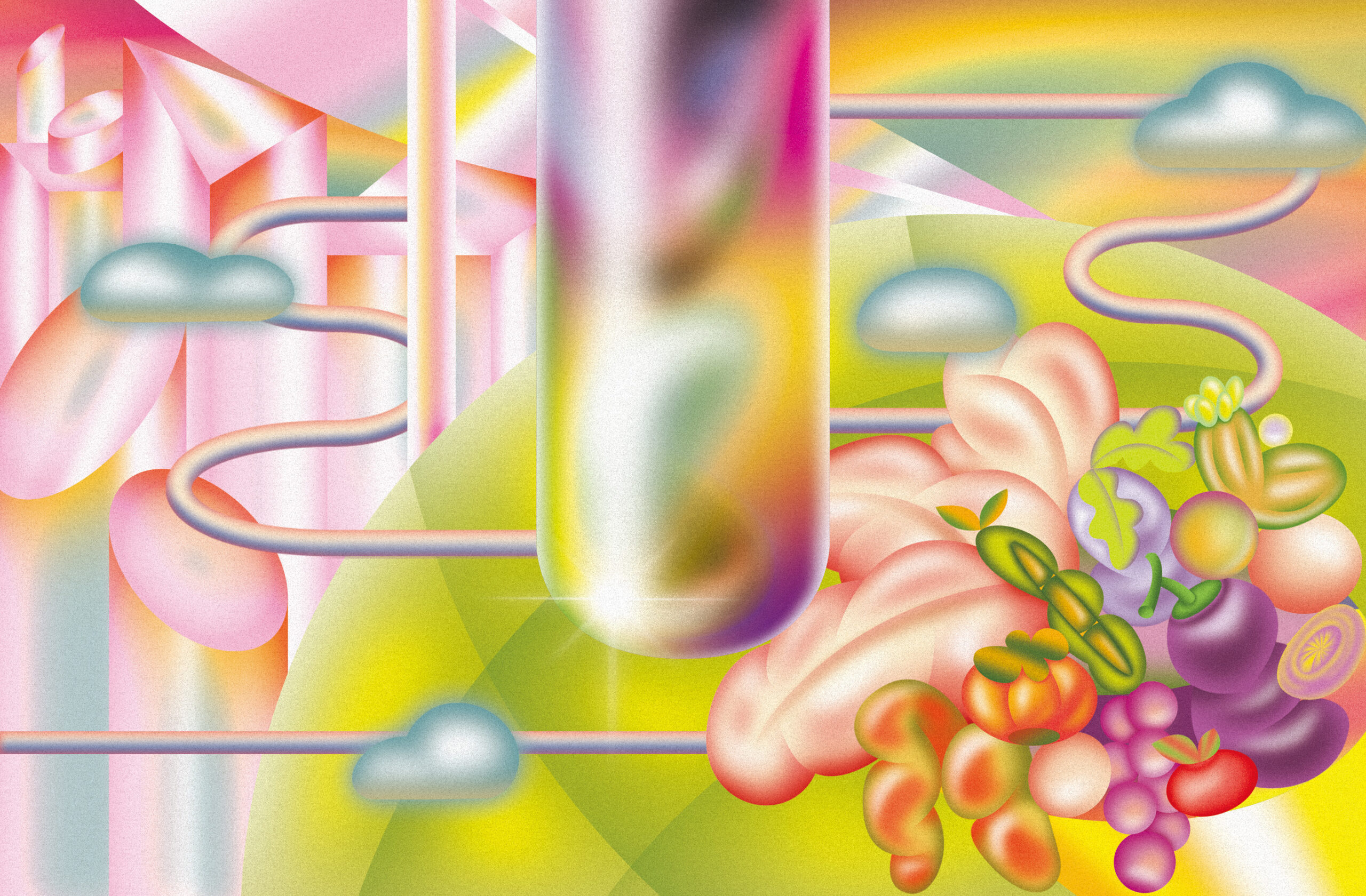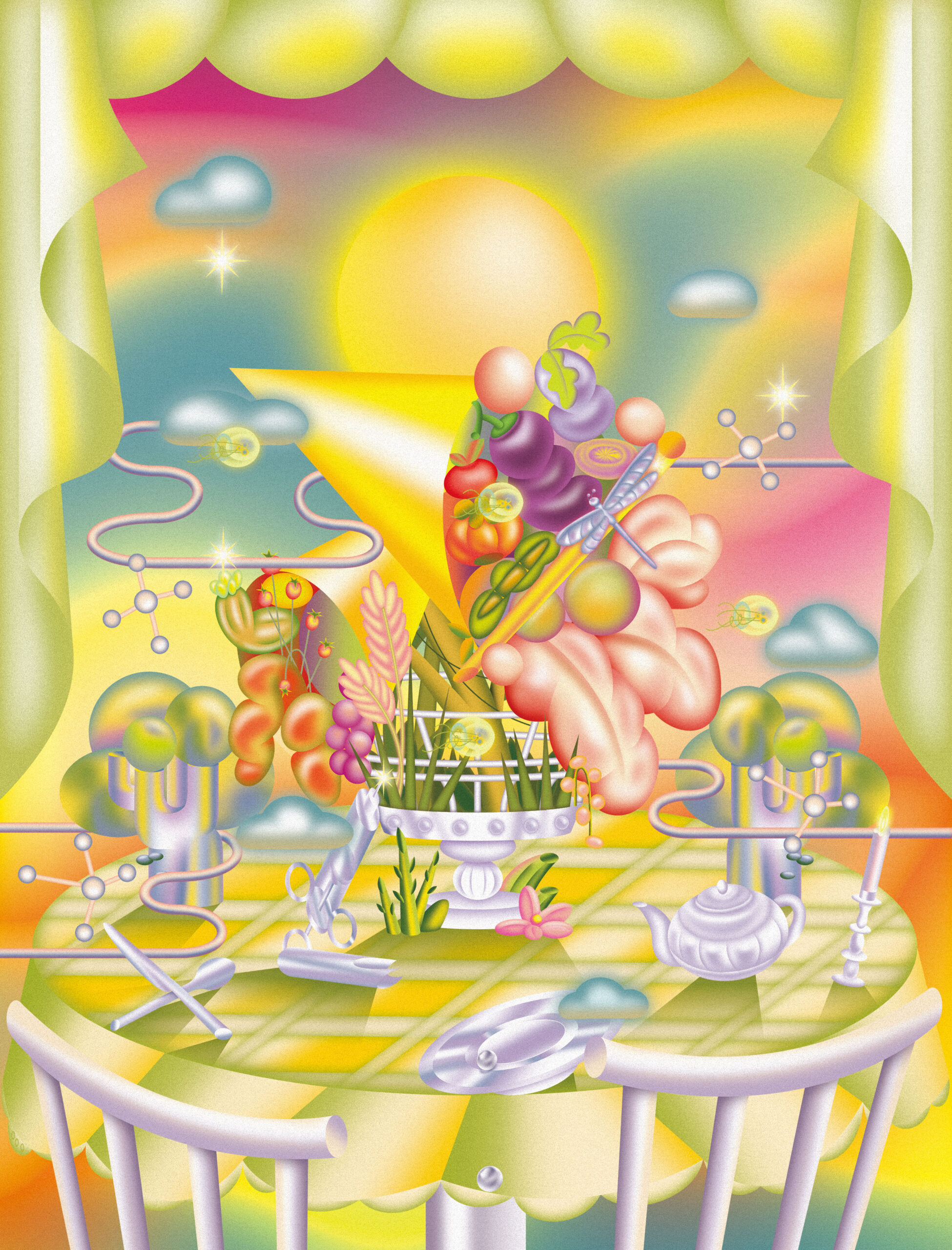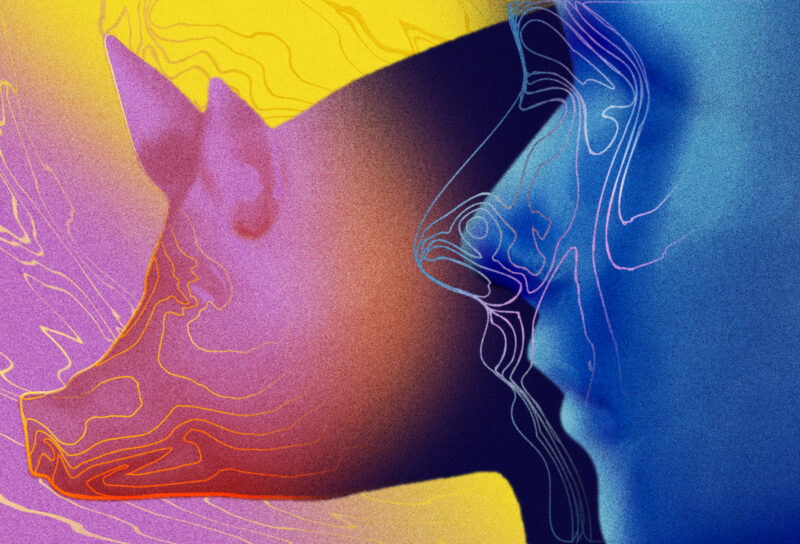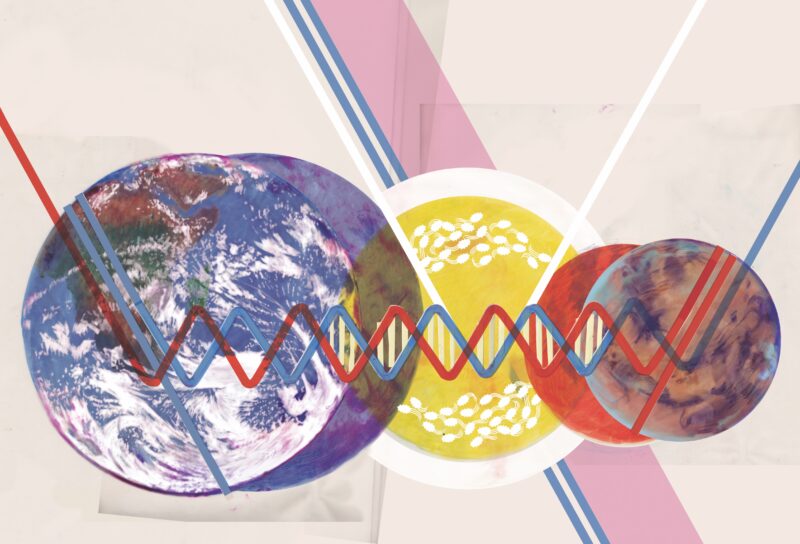At a public talk given at Harvard’s Science Center in 2018, Pat Brown radiated hopeful confidence. “We can have a world with nothing but upside,” said Brown, founder and CEO of Impossible Foods. The room was full of people curious to try Impossible Foods’ product, a meat surrogate made of textured soy protein and other ingredients, that at the time was new to the market. I caught Brown’s talk as I finished research for a book on a related but very different kind of food technology: laboratory-grown or “cultured” meat, which begins with animal muscle and fat cells grown in a bioreactor. Brown’s claims echoed those I had heard from many of cultured meat’s champions: nothing but upside. If this kind of public optimism feels a bit forced, consider that company founders speak a language shaped by many pressures. They must simultaneously convince their audience that they will improve the world, and convince potential investors that they will make money. It falls to tech journalists to ask hard questions, but therein coils an additional problem: ask too many inconvenient questions, and the technologists may stop talking to you.
The phrase “nothing but upside” was the upshot after Brown had spent much of his talk discussing the tragic downsides of modern meat. For decades, commentators from Frances Moore Lappé in her 1971 Diet for a Small Planet to Maryn McKenna in her 2017 Big Chicken have built up the case: animal-derived meat does not “scale well” by industrial means, but we have scaled it up anyway. We breed cows and pigs and chickens in the billions, raise them under inhumane conditions, and then kill them and process their bodies. Industrial meat production is environmentally ruinous, contributing between 14.5 and 18% of the world’s annual greenhouse gas emissions. It creates ideal conditions for zoonotic pathogens, increasing our pandemic risk. For the past fifty years, one of the most influential voices explaining how poorly meat “scales” has been the aforementioned Lappé, who described the inefficiencies of eating “far from the sun,” or in other words feeding plants to animals and then eating those animals. Her book includes the feed conversion ratios that scientists have established for the animals central to modern food systems, and shows the cow to be a particularly inefficient creature when it comes to making more of its own body out of feed. Whereas a chicken converts pounds of feed to pounds of body weight (at slaughter) at 3 to 1, and a pig at 6 to 1, a cow converts at a terrible 16 to 1. Lappé puts it perfectly: “a protein factory in reverse.” The inefficiency of cattle is not a novel concept; it even appears in Book II of Plato’s Republic, in which Plato acknowledges that raising cows can create pressure to acquire more land, leading to military incursions.
The problem is that for many people, there is no “world with nothing but upside” without meat, because meat signals affluence, command, and even dominion over nature. This is why there have to be meat critics in the first place, and why the subject of meat-moderation has long haunted conversations about the future of food. Gesturing at pea protein, Brown suggests that we can simply make meat anew. Technology would thus resolve problems originally set by the limitations of animal bodies. Making meat out of plants (or making meat by growing cells instead of animal bodies) could effectively mean abandoning an old, restrictive “substrate” for a new one. This is “nothing but upside:” the desire to have our meat and our planet too, the wish that technology might eliminate the need for compromise. You could call this optimism. I usually use the term “cornucopianism,” to conjure an old image, the horn of plenty, and an old wish: endless growth without consequences.

Default Ideology
I got the term cornucopianism from a 2006 book by historian Warren Belasco, Meals to Come: A History of the Future of Food, still the most important survey of its topic. Belasco describes a policy debate that has been running for centuries, in which cornucopians square off against Malthusians and egalitarians. Cornucopians insist on the power of human ingenuity to provide enough food to feed growing populations, often through technology; Malthusians insist on the hard reality of natural limits (soil fertility, water, land) and call for states to limit their populations as well. Egalitarians, historically the least influential voice in the debate, emphasize equality of distribution, so that no group will suffer malnutrition.
Malthusians have been very influential in policy circles, but cornucopianism is the default ideology of most of the developed world. Belasco surveys the artists’ and advertisers’ visions of the future of food that appeared in Western Europe and North America during the nineteenth and twentieth centuries, a mosaic of meals-in-a-pill, gigantic crops, foods delivered to houses by pneumatic tube, algae farms, and much more. These visions of the future of food were sometimes based on real historical or contemporary developments, such as crop plants made larger through careful selective breeding, or the use of sub-therapeutic dosages of antibiotics to increase the rate at which livestock grew to slaughter weight. Sometimes the relationship between science and future vision was more far-fetched, such as when the medical doctor Alexis Carrel claimed to keep chicken heart tissue alive in vitro for years. His claims made the newspapers, and led many to speculate about a future in which chicken parts might grow independent of a whole bird.
It is not clear if Winston Churchill really believed in this vision when he included it in a 1932 tract called “Fifty Years Hence,” but the idea of growing meat beyond the animal body anticipates practical laboratory work on cultured meat by at least 70 years. Giant crop plants and chicken parts without the limitations of a chicken’s body all bespeak a desire for growth beyond natural limits, and that desire is central to the cornucopian imagination.
Cornucopianism developed in a matrix of forces that included the intellectual trends of the Enlightenment, the extractive ambitions of colonialism, and unfolding agricultural experiments conducted both on European soil and abroad. In other words, it is as old as the modern world itself. Historian Fredrik Albritton Jonsson warns against the tendency to see limitless growth as a recent dream, finding its beginnings not in the oil economies of the twentieth century, nor in the digital economies of the twenty-first, but in the nineteenth, with cornucopian expectations for agriculture.
Cultured meat is the dream of leaving the natural limits of the animal body and taking up the cell as a new, potentially inexhaustible, substrate for food production.
One possible first cornucopian is the early nineteenth century economist David Ricardo, who famously rejected Thomas Robert Malthus’s view that food production encounters natural limits. In Ricardo’s view, farming operations can move from fertile tracts of land to less fertile ones as farming exhausts the soil, and by investing labor and resources, the less fertile areas can be made just as productive. With more labor and capital, the process can continue indefinitely, without limit. The result is a picture of substitution in which we achieve abundance by replacing one resource with another. Nor has Ricardo’s idea of mobile farming remained within the sphere of agricultural resource economics. Substitution is what sustains the hope of moving society from one type of natural resource to another—from plows pulled by human and animal muscle, to grinding grain with water and wind, to coal, to oil and gas, to nuclear power and perhaps to “green” electricity from wind and water and sun. Cultured meat is the dream of leaving the natural limits of the animal body and taking up the cell as a new, potentially inexhaustible, substrate for food production. It is not unlike moving from one exhausted tract of land to a fresh one.
Ricardo had substantial precedents. Faith in labor and capital, plus technical ingenuity, understood as human resources that could make up for nature’s failings, went back at least as far as the natural philosophy of Francis Bacon (1561-1626), which many scholars have characterized as “Promethean,” influenced by medieval and early modern alchemical traditions. “Cornucopia” is a word often found in alchemical lexicons, literally meaning “horn of plenty.” Baconian ideas later intertwined with the practical culture of technical literacy in what became known, after the fact, as the Industrial Revolution. Western Europe, and especially Britain, was full of the ambition to make the world anew, to exchange the world we have been given for one of our own artifice. This manifested not only in creating new tools and engines, but also in acquiring new land and establishing productive colonies.
History of the Future of Food
Francis Bacon himself had sent his king, James I, a memorandum in which he described the colonizing and “planting” of Ireland as a kind of second Creation. Bacon authored a work of utopian literature called The New Atlantis (1627), in which he dreamed of what now sounds like biotechnology, the creation of new plant and animal species to suit human needs: “We have [a New Atlantean says] also means to make divers plants rise by mixtures of earths without seeds; and likewise to make divers new plants, differing from the vulgar; and to make one tree or plant turn into another.” Bacon’s follower Samuel Hartlib, in works like the 1652 Cornu Copia, proposed crop plants that would reward farmers with Baconian levels of abundance. In later years, the term “improvement” was commonly used to describe very real programs of agricultural change in Britain, from new methods of treating soil and planting crops, to the well-known practice of “enclosure,” by which agricultural lands were consolidated under an ever-smaller number of landlords. But “improvement” has limits, and cornucopianism brooks none.
There is a strong case, then, that cornucopianism began before Ricardo and before the Industrial Revolution, and is properly seen as a late-arriving child of the Enlightenment and of the colonization of the “New World.” If cornucopians expressed optimism, it was often a direct response to worries about environmental limits, and to understand those worries we must turn to the Malthusians who expressed them most influentially. Their story begins with Malthus himself, who argued that population growth always outstrips increases in agricultural productivity. “The power of population,” Malthus wrote in his 1798 Essay on the Principle of Population, “is indefinitely greater than the power in the earth to produce subsistence for man.” Population, Malthus thought, increases exponentially (“geometrically”) as new land and resources become available. But agricultural productivity can only increase at a constant rate, or “arithmetically.” While natural disasters and disease might limit populations, in the absence of such ill fortune, a government might have to withhold food aid from its populace, lest they indulge their sexual natures and reproduce without concern for their children’s future meals. Malthus’s main concerns for the future of food, then, had a great deal to do with a dim view of the human condition. He was not optimistic about the power of technology to improve matters, either. From the colonial policies of the British Empire in Ireland and India, to twentieth-century Malthusians like Garret Hardin and Paul Ehrlich, Malthus’s influence has been broad and long-lasting; and yet if we turn away from debates and towards human agricultural practice, the future of food has been a cornucopian affair, not a Malthusian one.
The dream of a technology that is beyond politics is simply wrong.
Occasionally, the publication of an influential book, like Eric Schlosser’s 1998 Fast Food Nation or Michael Pollan’s 2006 Omnivore’s Dilemma will trigger public conversation and bring the issues surrounding the future of food into sharp focus. What’s the nature of progress? What constitutes a good life or a good-enough diet? What beings and features of our natural world fall within our circle of moral concern? But the headlines most associated with “the future of food” often address food technology, not agriculture itself, nor any of the aforementioned complex issues. The fantasy behind food tech has long been that the challenges of food, population, and natural resources, are essentially technical challenges best remedied by technological means. That is, they are not political at all, nor are they subject to normative debate.
But the dream of a technology that is beyond politics is simply wrong. This applies to genetically engineered apples as surely as it does to nuclear weapons. The philosopher of science and technology Langdon Winner argued that there are important senses in which technological artifacts have politics. One of them is that the design of those artifacts often involves settling issues that would otherwise seem glaringly open to debate. Foods of the future are just such technological artifacts seeking to settle the sustainability of our lifestyles themselves. Many of them, meat surrogates especially, carry the implicit message that our patterns of consumption, and our creation of new consumers, can carry on without change in the face of climate crisis. The problem was never human behavior, in other words, nor was it the unprecedented scale of contemporary civilization, which was achieved by cornucopian means. The problem was the industrial substrate on which civilization stood. Find a fresh substrate, save the world.
Natural Limits
Cornucopianism is not a weird historical footnote. Nor is it a doctrine held only by a few cultish techno-utopians and neoliberal economic policy wonks, whose views of course are shaped by forces much more recent than Ricardo, including the technology-centrism that guides so much thinking today. Cornucopianism is now more important as a hegemonic ideology than as an explicitly stated program for growth. Cornucopianism is simply the logic of the civilization under which most of us live, part of our culture at large. Cornucopianism may have its “deepest roots” “in the realm of alchemy and natural theology,” as Jonsson puts it, but it secularized a long time ago, and became a doctrine of human action rather than of divine providence.
But our climate crises make it impossible to ignore natural limits. One answer is to simply construct new artificial frontiers, an idea that might please Bacon or Ricardo, if only it proved feasible. The dream of meat surrogates, for example, seems to be to rebuild the “golden arches” of cheap meat out of better material, by finding a more sustainable biological substrate. The dream carries the cornucopian logic of substitution into the present.
The full history of the future of food includes more than cornucopian substitution strategies, and the Malthusian fears that often drive them. It also includes egalitarian ideas about sharing the resources that we have, and embracing appropriate limits in pursuit of equity and sustainability. Whereas the egalitarians of past generations could focus on the welfare of human populations, contemporary egalitarians must contend with the damage industrial civilization has already done. It is incumbent upon us to consider the environment not just as a set of resources to shepherd but as a presence with moral standing of its own.
Francis Bacon hoped for a second, human-made creation, in which we could rewrite nature’s limits as our purposes require. But those limits have turned out to be far less tractable than some Enlightenment thinkers hoped. To tune in to the food technology nexus in the early twenty-first century is to see old themes in intellectual history replaying on novel biotechnological terms. The wish for “nothing but upside,” for an abundance that allows us not to question the larger patterns of our civilization, is just that, a wish, and that ought to tell us something about the amount of authority it deserves.



